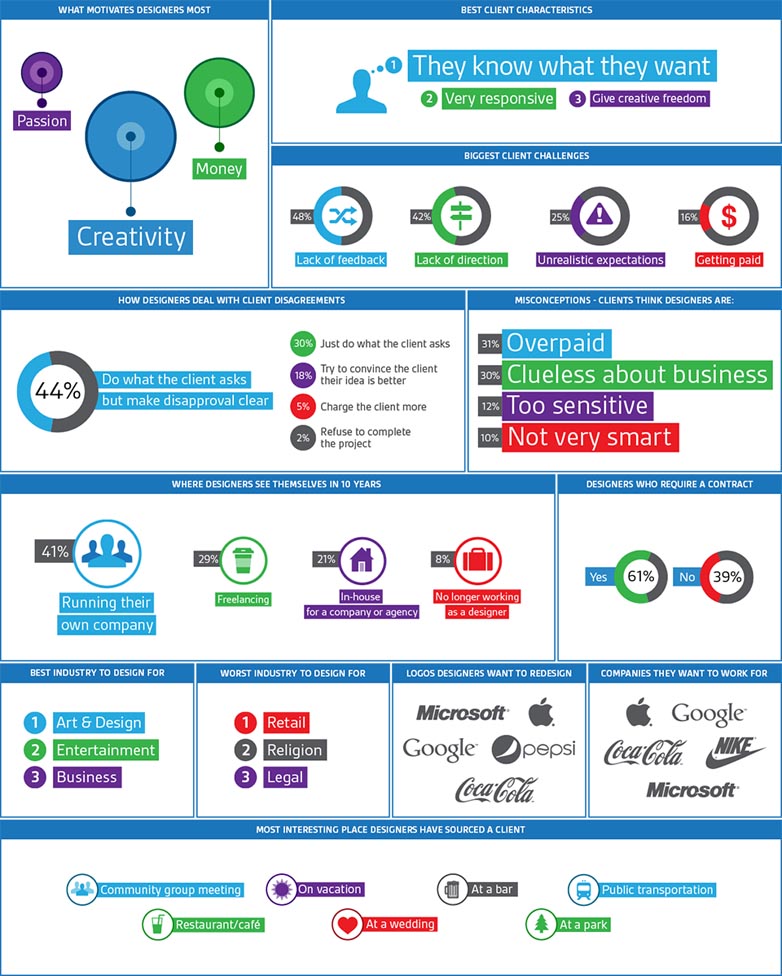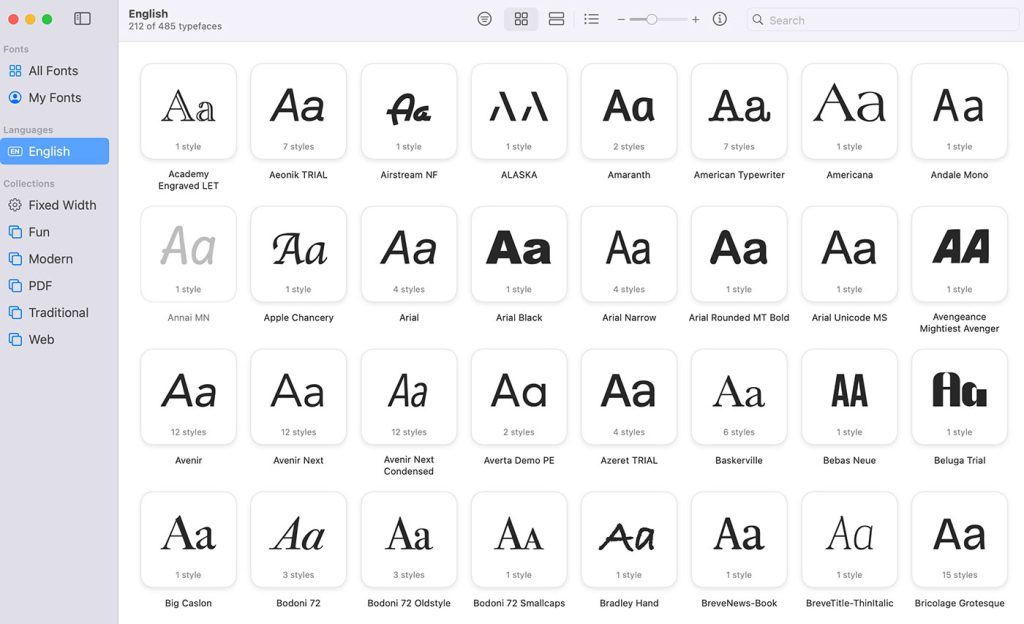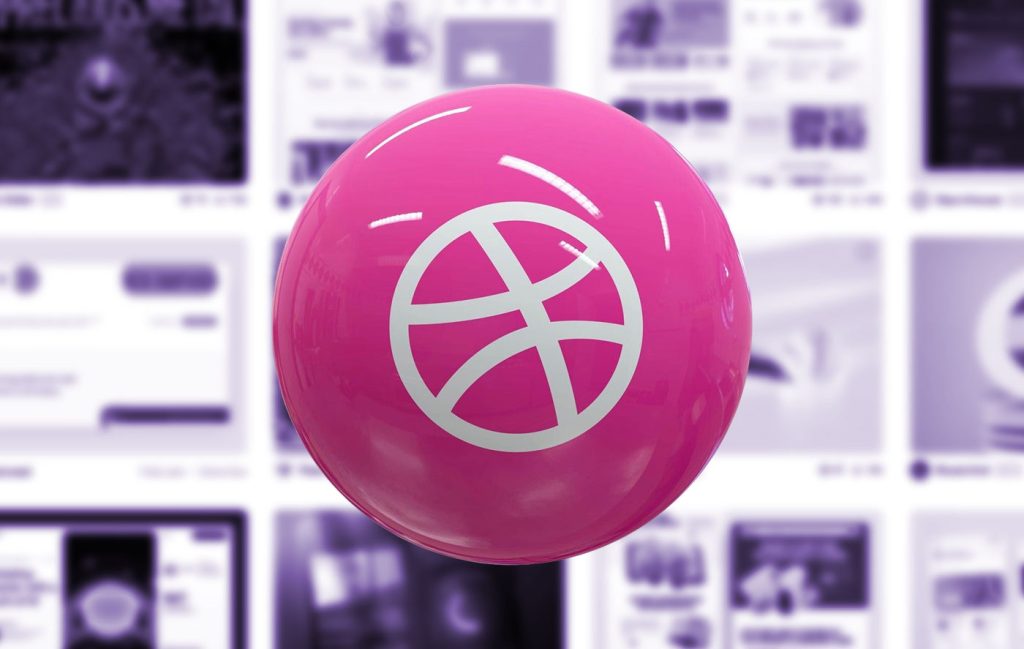“Whew!” exclaimed a recent client when he finally agreed to pay his entire fee, “I didn’t know artistic-types were such tough businessmen.”
“Oh, we are,” I said calmly as I put his final check into my pocket, “We have to get tough with clients when they don’t want to pay for a professional job.”
With that I walked out with a smile on my face, knowing this client would never call me again but I felt the self-satisfaction of having stood up for myself and having won. Usually, a great many freelancers live with the ulcer-inducing memories of too many screwings by clients. Sure, it gives you interesting stories to share later with other designers but they are also memories with feelings of failure and that’s not good for any human and much less so for a businessperson.
Being a designer is a tough position, whether it’s on staff or being freelance but I’m not telling you anything you don’t know. The question is; do you admit that to yourself? We see examples of crazy clients and bosses on sites like clientsfromhell.net, then shake our heads and laugh but inside we feel anxious and see ourselves and what we see as our failings.
In a recent survey of designers, entitled “How to Woo a Designer”, over two-thousand respondents provided some interesting and shocking answers. Let’s look at these answers and figure out why so many creatives run their professional lives as they do.
Know what you want before you hire a designer
Clients who know what they’re looking for at the outset of their design project score points with designers — 51% of designers surveyed consider that one of the most important characteristics in a client. 47% of designers say responsiveness is key, and 46% want clients who give them creative freedom. 36% of respondents put tremendous weight on getting paid on time, though the actual dollar signs themselves don’t appear to carry much weight — just 5% say the most important client characteristic is an unlimited budget.
Shocking! I would think 99.9% of designers want creative freedom. The fact is, as the industry is flooded with people trained more of the technical aspects of computer design software, perhaps they prefer to be told what to do as opposed to being creative? It’s also interesting to see that 64% of designers aren’t concerned as much with being paid on time? Could this be one reason clients see freelancers as artsy-types who don’t care about money? An unlimited budget is nice but it also rarely exists. Are 5% of us fooling ourselves that a client will keep throwing money at a project?
Creative challenges motivate designers more than big paychecks
The opportunity to be creative and design something cool motivates 62% of designers to take on a project, compared to 48% who are swayed by fat paychecks and just 6% who consider a client’s prominence key.
You can’t beat the “cool factor” in design! I don’t know a designer who has turned down a lower-paying project or pro bono project when it looks like it will be enjoyable and make a great portfolio piece. Half of us are swayed by money? Well, who hasn’t taken on a project that paid well but wasn’t that fun or may be against personal beliefs?
Designers crave your input
48% of designers say lack of helpful feedback is among their biggest challenges in working with clients, while 42% point to clients’ lack of direction and 25% indicate unrealistic expectations as major obstacles. Most clients seem to be coming through with their wallets, though — just 16% of respondents say getting paid what they’re owed is a problem.
Sounds like these figures haven’t risen or waned over the last decade. It’s imperative that designers use creative briefs and the right questions to start a project properly. Getting as much information out of the client and then running the project with complete transparency is the key to a smooth job and, I suspect, cutting down on clients who are disappointed with the results and don’t want to pay. There will always be the deadbeats, too, but perhaps satisfied clients would cut the 16% figure down by at least half.
Expect your designer to have, a voice, an opinion
The majority of designers say they speak up when clients disagree with them on a design decision – 44% will do what they’re asked but make their disapproval clear, while 18% try to convince clients their idea is better. 30% of designers report they just do whatever clients ask. Another 5% do what the client wants but figure out a way to ultimately charge more, while only 2% outright refuse to complete the project.
It’s a tough thing to do when a client or committee are set on making changes into their own vision and if that vision is wrong, the designer takes the blame. Designers, however, are problem solvers and if your original design solves the problem, then changes that water it down MUST be explained to the client. Design decisions are, or should be, made with problem solving in mind. Just being “pretty” is not enough. This element draws the eye in, this one traps it, this is larger than the logo to emphasize the logo with negative space around it, etc. Sometimes you just have to give in when you know it’s the wrong decision. You can inform the client they’re wrong and discuss why but all you are doing is embarrassing them and they don’t like that. It’s best, in problem solving, to listen and consider if the client’s input has validity and if there’s a middle ground that will solve the design problem but also give the client what they want for their business. In the end, if it works with consumers, then you are both geniuses. If it fails, no matter what, you can’t tell the client “I told you so.”
Designers are not overpaid – or clueless about business
31% of designers say the biggest misconception business owners have about designers is that they’re overpaid, while 30% say clients think designers are clueless about the business world. 12% are tired of being labeled “too sensitive” and 10% give the business world a thumbs down for thinking designers are, to be blunt, not very smart.
Well, look at all the answers in this survey! We are not known as individuals but as a whole and when a percentage of designers puts forth negative stereotypes, we all suffer. We are, however, not the only ones who are considered overpaid by the business world. Try being a teacher, police officer or Firefighter!
Designers are an entrepreneurial bunch (who don’t necessarily want to work at your company)
41% of designers indicate that in 10 years they plan to be running their own companies, while 29% plan to be freelancing, 12% expect they’ll be working in-house at a company and 9% think they’ll be in agency jobs. Only 8% indicate they will no longer be working as graphic designers 10 years from now.
When my father was in the army and his platoon was about to be shipped off to war, an officer told the men to look to the man on the right and the man on the left of them and announced that only one of the three would survive unscathed. The same may be said for art school graduates. None of us can tell where we will go with our careers. Opportunities come out of the blue. My friends always said I was the Forrest Gump of the design world. I just seemed to be in the right place at the right time. Some people will stay in the advertising industry, others will freelance for their whole carers and some will use their innate creativity for other avenues at some point in their lives. As long as creativity survives, there is always something that can be done and initiatives that are there for the taking.
Designers love art and entertainment clients, are less psyched about religious and legal projects
Given a list of 22 common industries, 43% of designers say Art and Design is one of their favorite to design for, followed by Entertainment and The Arts at 24%. Three industries share a third-place ranking at 22%: Business and Consulting, Internet/Technology, and Food and Drink products. Designers’ least favorite industries include Travel & Hotel, Automotive, Retail, Religion and Legal.
There are no rules and no favorites. There will always be those who have a preference and love for something close to their heart. None of these industries mentioned will ever lack for design talent. The favorite industries will have more competition for open spots but “Art and Design” has wide latitude with plenty of opportunities.
Designers find new clients virtually everywhere (bowling, anyone?)
In order of popularity, the most interesting places designers have sourced new clients are: community group meetings, restaurants, vacations, family gatherings, bars, weddings, public transportation, parks, gyms, beaches, online dating sites, airplanes, religious services, grocery stores, hospitals, post offices, funerals and bowling alleys.
Everyone you meet is a possible client. Keep your business card with you at all times!
Contracts optional?
39% of designers don’t require clients to sign on the dotted — or any — line, to take on a project.
Bad news! 100% of designers should use some sort of written agreement 100% of the time. If you are afraid the client will be offended that you ask for something in writing, then you need to grow a pair at least big enough to explain it protects both parties and transfers copyrights legally. Don’t have a proper contract/agreement/work order/designer’s engagement? Go to docracy.com where there are a dozen different contracts that can be used and tailored to your needs. If you don’t get it in writing, you will have problems down the road. Clients sign lots of contracts for office space, office equipment, phone service, internet, etc. Why would they not want to have a contact with you unless they plan on causing problems?
Hey, Microsoft, Google, Apple, Pepsi and Coca Cola — how about a new logo?
If given the chance to redesign the logo of any major company, these are the top five designers would choose. The rest of the top ten includes IBM, eBay, Samsung, Nike and Wal-Mart.
Hmmmm! The recent redesign of the eBay logo brought lots of unwanted and unwarranted opinions on design chat boards and groups. Do you really think the fame is worth having every person who owns a copy of Adobe CS airing there thoughts on what you did wrong? If you do redesign one of these logos, just take the money and laugh all the way to the bank when people start cutting down your work.
Designers want gigs at…
Apple, Google, Coca Cola, Nike and Microsoft: If they could work for any major company, these are the top five designers would pick. The rest of the top 10 includes Pixar, Adidas, Adobe, Disney and Facebook.
Sure, it sounds good now but corporate life isn’t as fun as it sounds. Still, it all looks good on a résumé but if you never land a job at these popular places, even the smallest of design studios has something that outweighs the big names – creativity. Sometimes the smaller the studio, the more you learn by being hands on. As long as creativity is part of the job, then anywhere is a great place to work!
For a beefed-up, interactive version of this infographic, CLICK HERE!
What about you? How do YOU feel about these questions and answers? Let us know in the comments.
Featured image ©GL Stock Images. Infographic ©99designs







